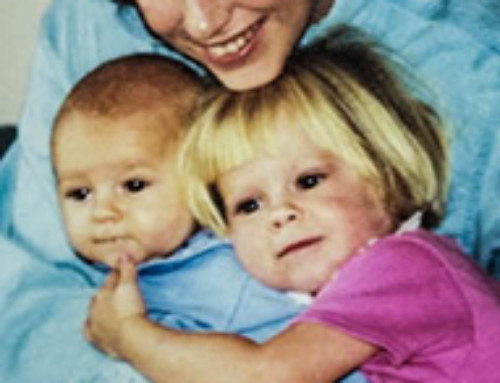 Myers Briggs Type: Right, Left & Center.
Myers Briggs Type: Right, Left & Center.
“First of all, if you can learn a simple trick, Scout, you’ll get along a lot better with all kinds of folks. You never really understand a person until you consider things from his point of view-until you climb into his skin and walk around in it.” To Kill a Mockingbird
This spring my husband and I time- traveled. We went with dear friends to Monroeville, Alabama to see the live performance of Harper Lee’s beloved book, “To Kill a Mockingbird”. Sitting on the lawn of the Monroe County courthouse, we allowed the Mockingbird Players to escort us back into the depression era South where racial hatred and discrimination so riddled the cultural consciousness that otherwise well meaning people and scoundrels alike conspired in a groupthink that rendered justice a mockery for Negroes (the preferred term by African-Americans during the time with which this article deals).
You recall the story line……..
It is 1932 in the small, fictional town of Maycomb, Alabama. It could be small Southern anywhere. The town’s sleepy ways, slowed down even further by the depressed national economy, creep like the slow crawl of molasses over the calendar of days. “People moved slowly then. They ambled across the square, shuffled in and out of the stores around it, took their time about everything. There was no hurry, for there was nowhere to go, nothing to buy and no money to buy it with, nothing to see outside of the boundaries of Maycomb County.”
On this seemingly blank canvas, three of the main protagonists; Scout, a six year old precociously questioning girl, her older brother, Jem, and their friend Dill, create their lives from the recesses of their imaginations in the way we did before play stations and video games. The games they invent and play take them into the lives of the mysterious, reclusive Boo Radley. And, onto the porch of the morphine addicted Mrs. Henry Lafayette DuBose. Across the street, Miss Maudie Atkinson welcomes them into her garden and her cake baking kitchen for a little touch of normalcy.
The children’s coming of age exploration turns tragic when they come face to face with the pathos of the times. Racism rears its ugly head in ways that perplex and confound the still innocent Scout and Jem. Tom Robinson, a Negro male, is falsely accused of raping a white girl. The town rails against him in foregone, erroneous conclusions. Attorney Atticus Finch, Scout’s and Jem’s wise and wonderful father, mounts a brilliant defense for the wrongly accused Tom Robinson. In so doing, he stands alone against the sanctioned cruelty of racism.
Injustice is served when the jury, representing many though not all of the townspeople, finds Tom guilty. This gross miscarriage of justice reflects the prevailing close-minded attitudes of prejudice, hatred and institutionalized racism.
Juxtaposed against this sordid background, Atticus Finch rises like a phoenix from the trash-heap of hell. In his quiet, principled way, Atticus Finch consistently exemplifies integrity in his every move. Sitting patiently on the porch swing with Scout, he listens as she rails with unbridled indignation and confusion against the unfairness she sees around her. She protests, “When they finally saw him, why he hadn’t done any of those things, Atticus, he was real nice.” Her father responds, “Most people are, Scout, when you finally see them.”
As he teaches her, he teaches us to set aside our pre-judgments about people and look into their humanity.
When Jem struggles to comprehend the ineffable guilty verdict, Atticus teaches him about the slippery slope of moral development. “So far nothing in your life has interfered with your reasoning process. Those are 12 reasonable men in everyday life, Tom’s jury. But, you saw something come between them and reason. There’s something in our world that makes men lose their heads-they couldn’t be fair if they tried.”
As we eavesdrop on his fatherly advice to Jem, we are reminded to examine our own selves for the cynicism and hardening of the attitude that can come with aging and collective unconsciousness.
When Atticus stands against the maddening crowd to defend an innocent Negro, he shows us integrity. When he shows and encourages respect for the town deviant, Boo Radley, he shows us compassion.
The wisdom of Atticus Finch shaped the budding characters of his son and daughter. And, through this fictional account of a tragic social truth, his words and deeds conspired with the mounting tides of social outrage to encourage a Civil Rights Movement in a country that both craved and resisted it.
Published in 1960, this first time novel written by an unknown small town Southern writer quickly found a home in the hearts of the nation. Selling twenty-five million copies its first year, To Kill a Mockingbird won the Pulitzer Prize in 1962. The motion picture was nominated for eight academy awards and won three. The American Film Institute named Atticus Finch the Greatest Movie Hero in history. In 1991 surveyors of Lifetime Reading Habits through the Book of the Month Club found Mockingbird to be second only to the Bible in “making a difference in people’s lives. “ It continues to parallel Shakespeare in being the most often required reading by middle and high school teachers; and continues to enjoy a readership of 1,000,000 people a year.
Humanity is hungry for leadership. Something deep in the hearts of most people prefers peace. Yet, we seem to confound ourselves with every step. Believe it or not, this article is not intended to confine itself to the atrocities of racial inequity, historical or current. It is instead the first of a series in which I will make a plea for civility in our current day conversation. As the political season heats up, the tension between opposites increases. And, I don’t mean in Congress, the White House or the campaign trail. I mean in personal conversations among friends, foes and family members.
Like the townsfolk in Mockingbird’s town of Maycomb, we still prefer the company of our own, be they right, left or center on the political palette. I invite you to join me in the next five articles. The final four will be portraits of personality type and temperament as magnified through the lens of Myers-Briggs Personality Type. Hopefully, this glimpse will provide us with a perspective through which we can view those strange people of varying political stripes and call them friend.



